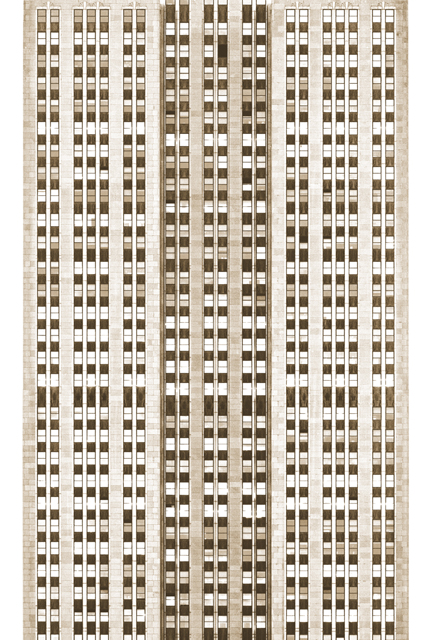OUTLINE
The evolution of Camilla Borghese’s research, which started as an attraction for ancient Roman architecture and recently reached the twentieth century skyscraper, appears to focus on the relation among architecture, design and photography, where the latter does not aim at documenting, but at speculating on the architectural form.This new course speaks an incisive language and gains substance from the extreme synthesis of the real fact, according to a procedure that reduces forms to primary geometry dominated by the rigor of a general stylization. (…)
In the photographer’s production the New York shots of 2017 not only represent a temporal goal – a precise focus on modernity within a production that has dedicated great attention to ancient architecture – but mainly exemplify the elaboration of the new course. The enhancement of bidimension, the essence of the design, the accentuation of the geometric grid as well as the use of over exposure are in fact the substantial traits of this series that from the very first shot appears more free and more graceful. The Seagram Building (1958), icon of XXth century architecture, speaks a rather classical language, where rhythm and proportion among the different elements pursue a harmonious principle as in a Greek temple. Overexposed enough to appear dematerialized, condensed in its steel structure that stands out in the milky sky, Borghese’s Seagram is in all evidence the direct outcome of her study of the Pirelli skyscraper (1956-1960) in Milan. (…)
The extreme analysis of the buildings focuses on the form at the basis of the project that unfolds according to a precise plan. Borghese lingers over the architectural language in search of what remains and repeats itself, on archetypical forms, though with a fresh and dynamic style. Moreover she does this at a historic time when architecture, which experiences a period of great stylistic freedom, tends to deny the aesthetic standards of proportions and perspectives in favor of eclectic forms.
Hers is thus a research of the “eternal” essence of architecture that regenerates through the great form transformation processes, along the flow of history where the three dimensions, both physical and temporal (past, present and future) are no longer important.
Serena De Dominicis

 Facebook
Facebook










